8: Standard English Cards in Latin America: Argentina, Brazil and Chile
A brief survey of the designs of English cards in South America.
As can be expected from its history and even its name, the large area referred to as Latin America has a varied array of playing cards influenced mainly from Spain and America. The best starting point to get information about the countries that make up this part of the world is the WoPC website►.
Spanish-suited packs abound and there are a lot of examples illustrated on the site. Here I will concentrate on the origins of the standard English cards from some of the constituent countries, as far as I know them. There are both imported cards from either Spain or, more commonly, America, and American cards made for the local makers/publishers. There are also some very interesting copies of other people's designs and idiosyncratic ones as well. For a full list of my South American and Mexican cards, click here►
Argentina
Cards were imported from US makers such as USPCC, Whitman, Arrco and E.E. Fairchild, and there are several examples on the wopc site. Occasionally they came from European countries. The pack below is by Goodall (De La Rue printing) for Harrods in Buenos Aires.

Goodall, c.1930
Another earlier pack by Goodall isn't actually standard English. They made a pack for the Buenos Aires Jockey Club with standard Belgian pattern courts and a special version of their joker (1897-1902).
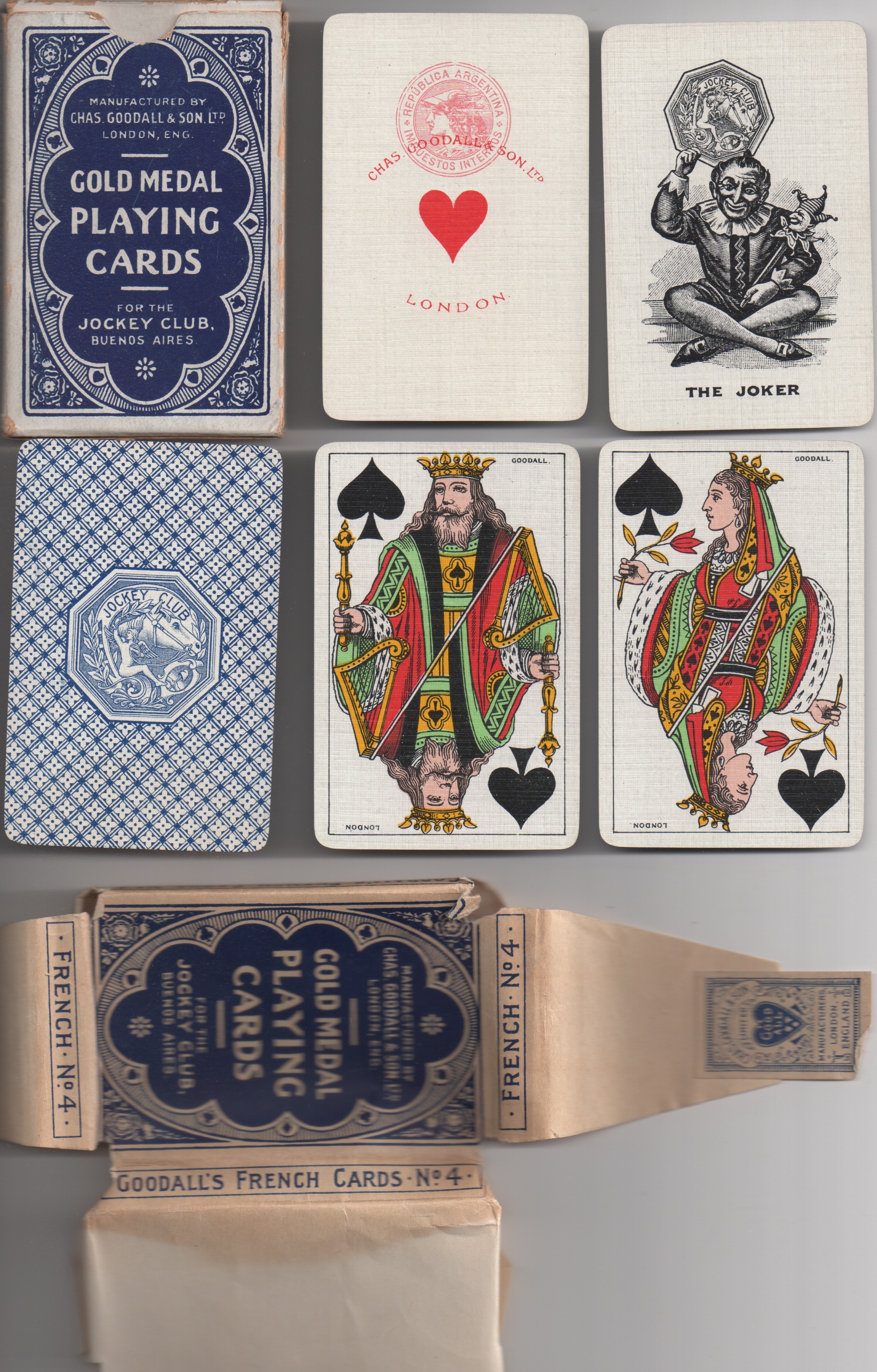
More interesting from my point of view are the altered copies and the invented designs, though there is a very interesting import from Spain by Braulio Fournier of Burgos. The courts are not like those of Heraclio; they have a hint of courts by Piatnik of the same period in the heads, faces and suit-sign shapes, but basically they are his own designs.
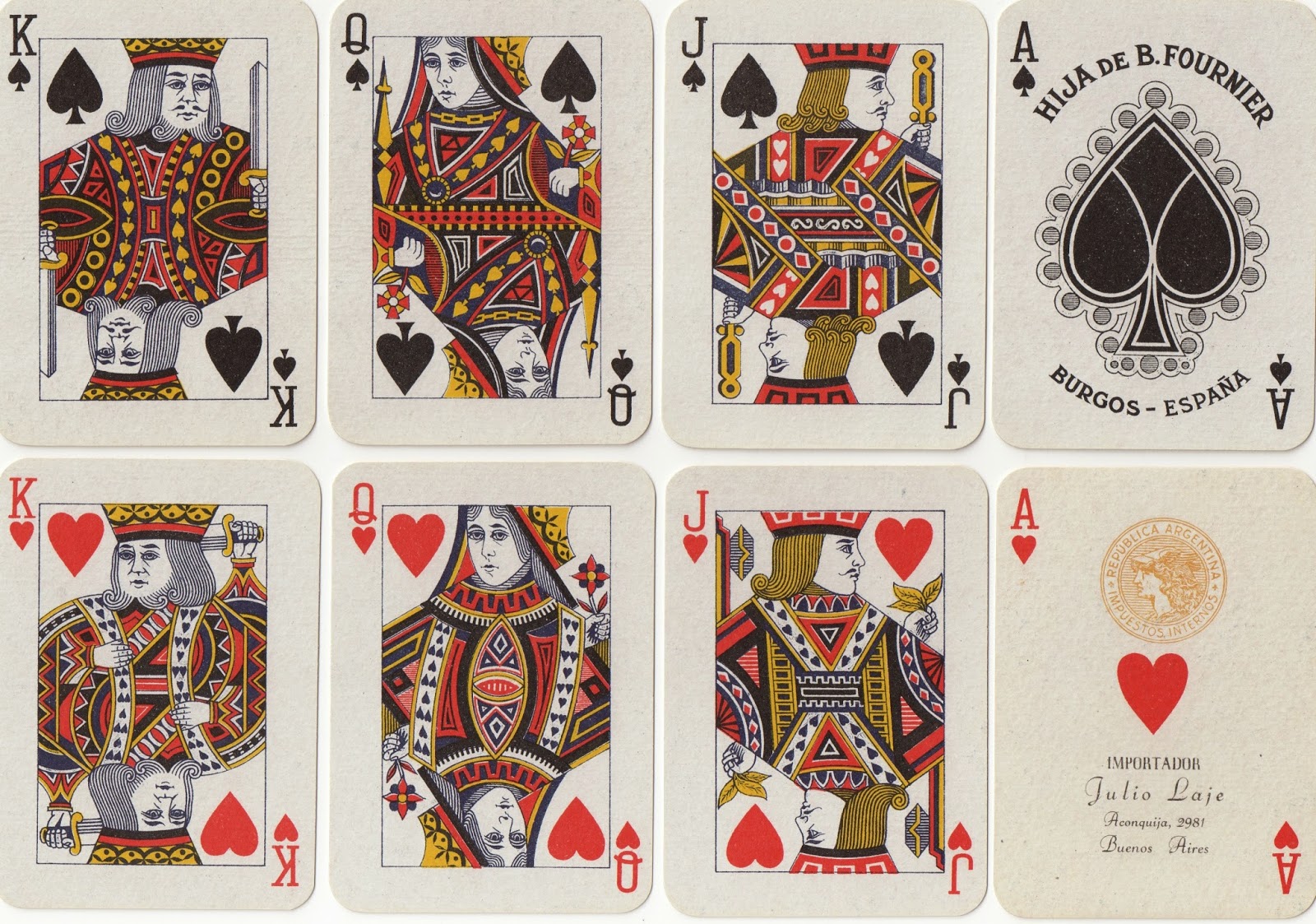

B. Fournier, c.1945
First of the local packs is a copy of the much more common Heraclio Fournier courts with little moustaches not found on the originals.

Vigor Pokerin, 1974
A much less close copy of Fournier's design was used by Holmberg.

Holmberg, c.1955
The US4 copy below is in unusual colours; note the pilfered Waddington AS and joker! Also the designs of the QC and the QD have been switched; and the QC has lost one side of her head-dress.

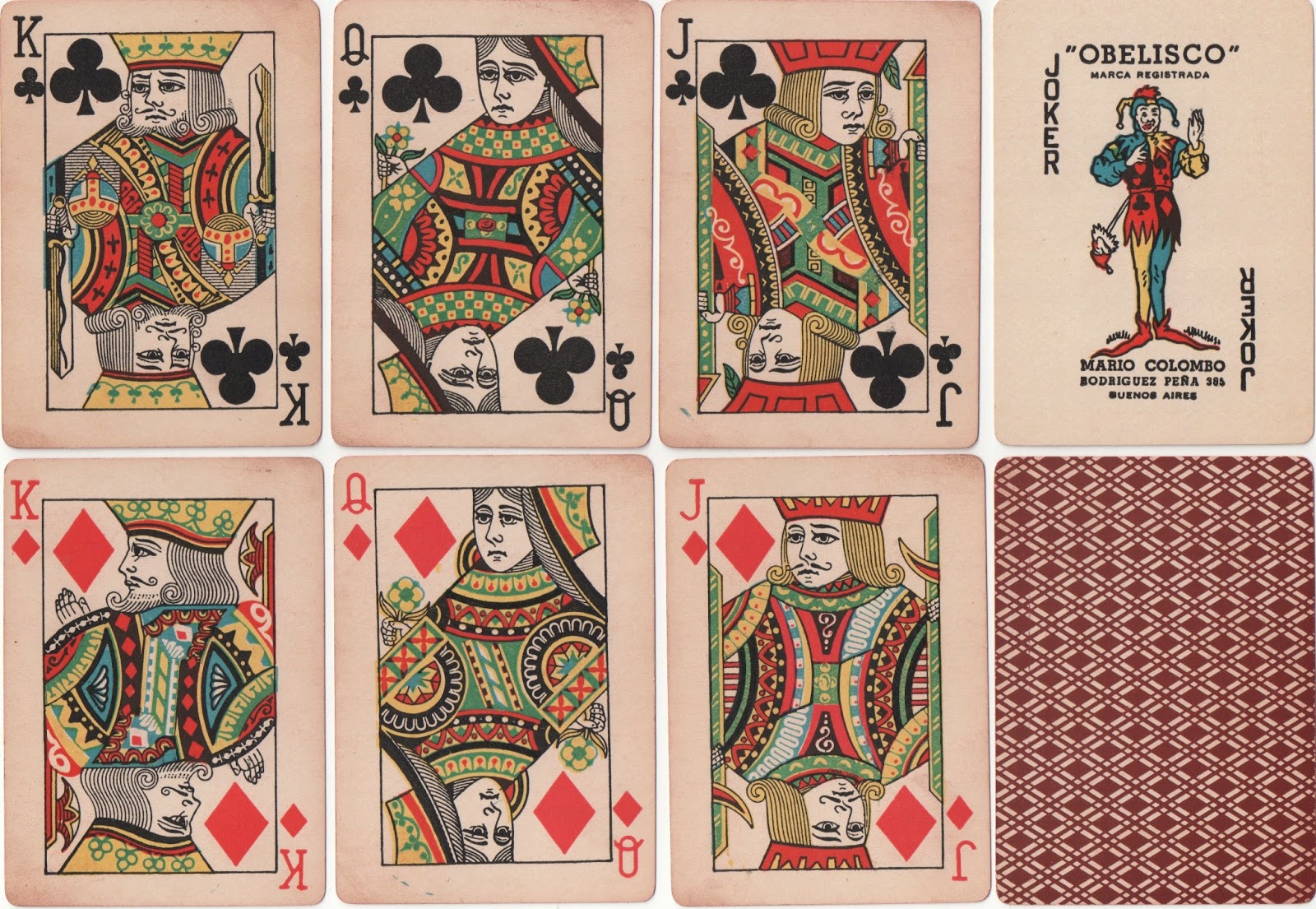
Mario Colombo, c.1950
Fourvel also used US4, but theirs was a very close copy of the original; see www.wopc.co.uk/argentina/fourvel/side-car►
One of Piatnik's versions of the Goodall design is an unusual choice by Della Penna.
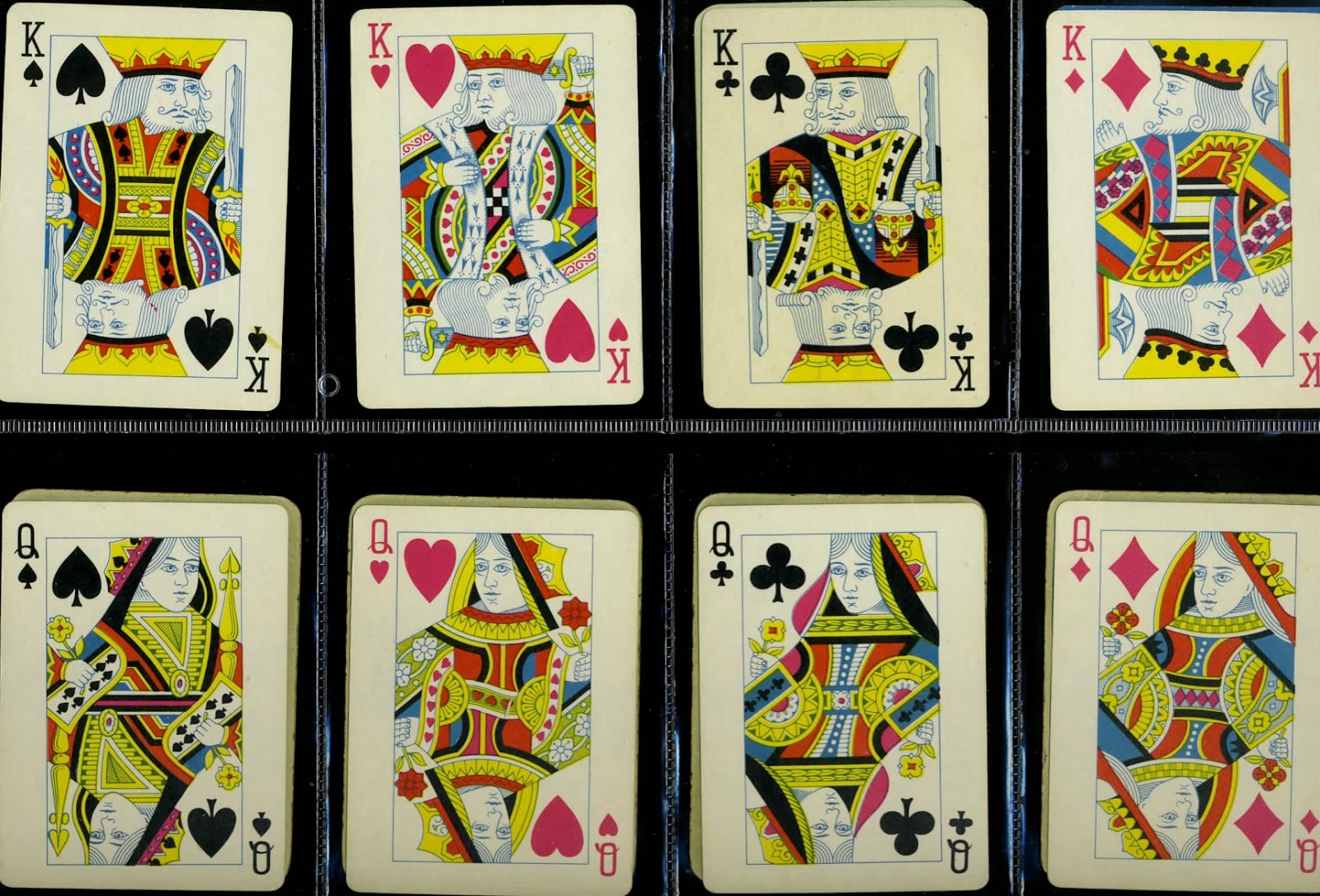
Della Penna, c.1970
A fancy redrawn version of USPCC/NYCC US7 (as used in Bee brands) in three colours.

Anonymous Arlequin brand, c.1965
Another redrawn version of US7 was used by Flaiban in some of their Tela de Araña packs, also in three colours.
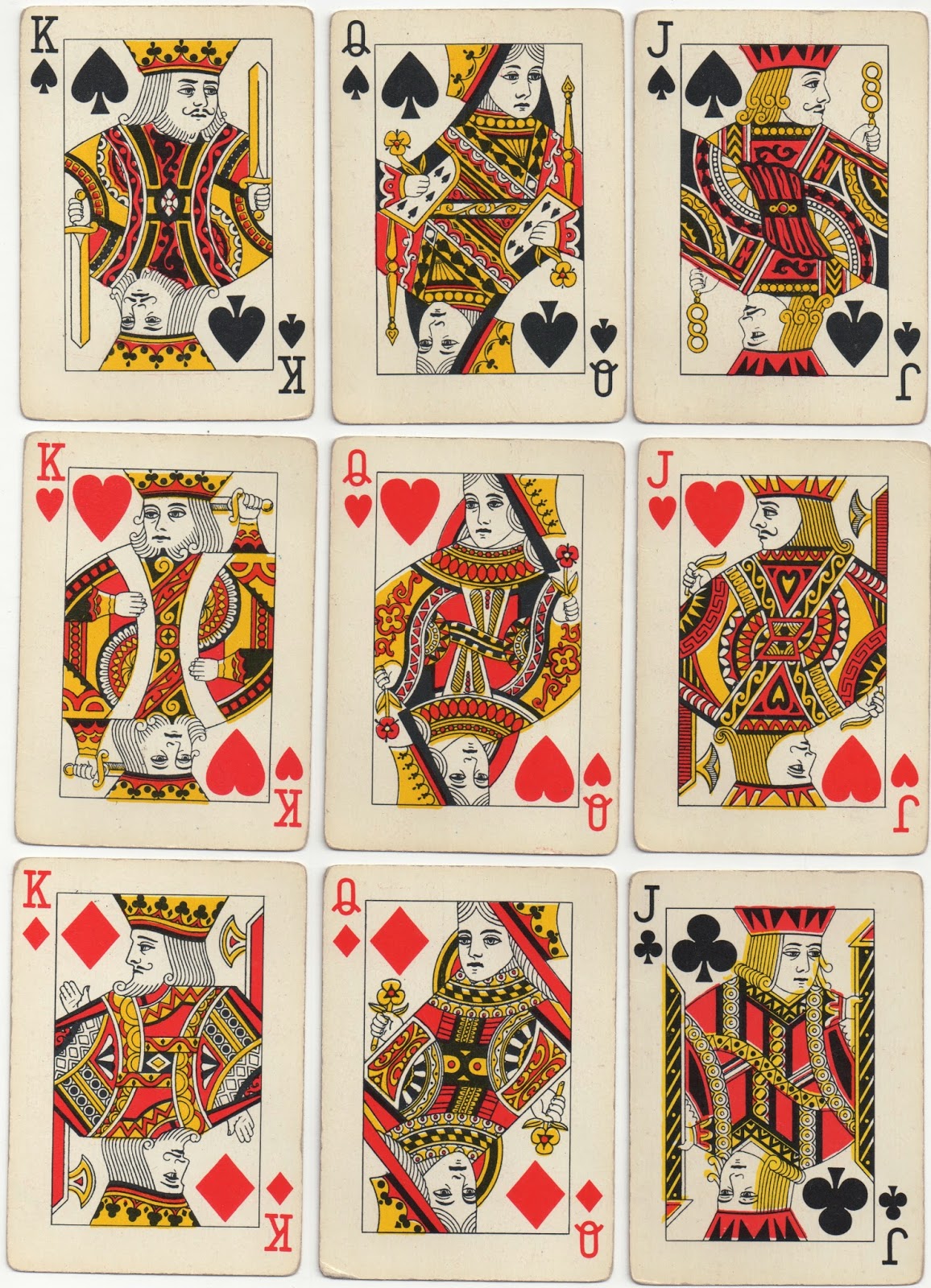
Flaiban, c.1960
Nascal used its own version of an American design found in the pre-war Cruver all-plastic packs.
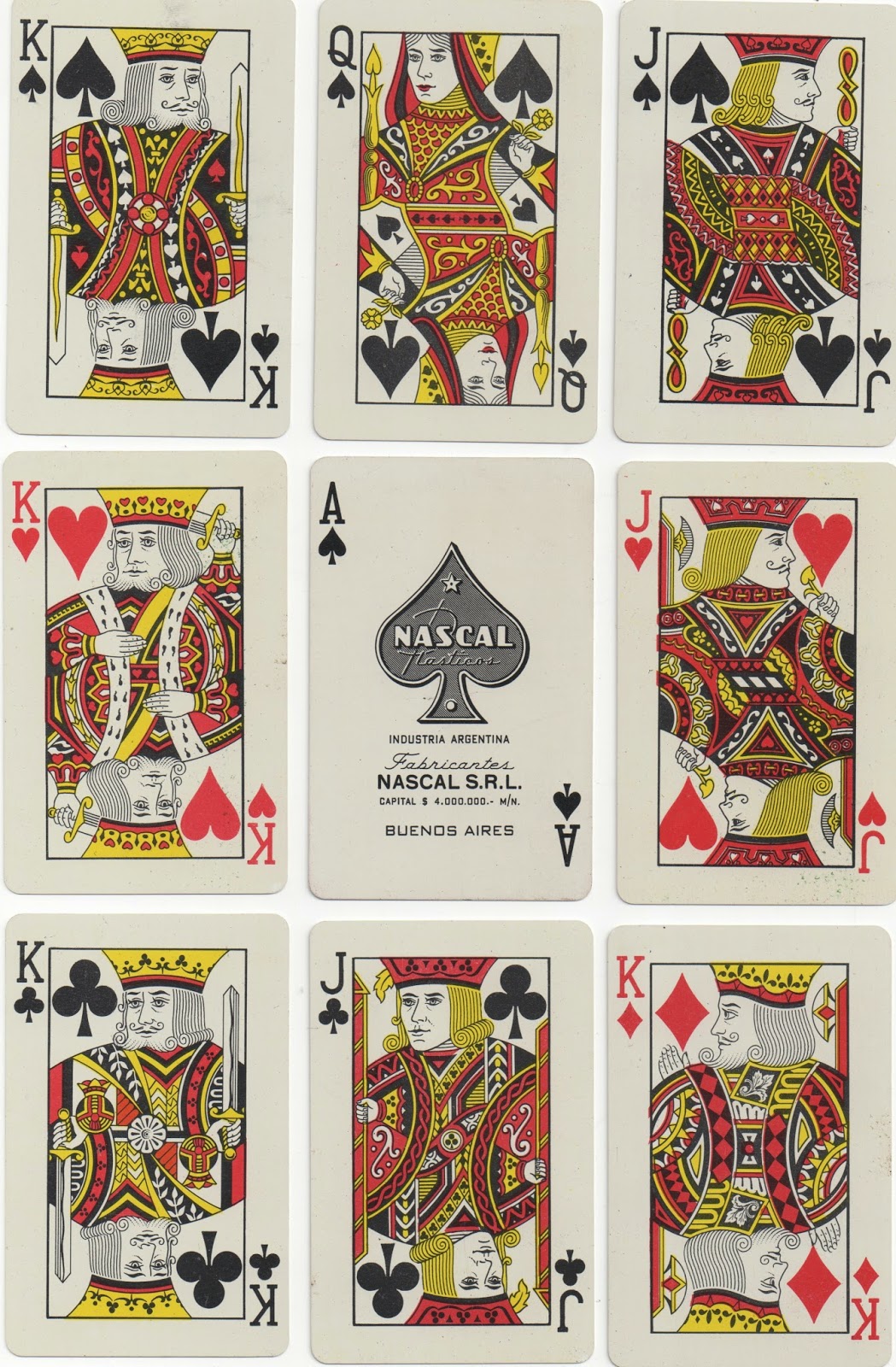
Nascal all-plastic, c.1965 (jokers are on page 26).
It's intriguing to see how much influence there is from American cards, though this may not be surprising, given the geographical proximity of the two sub-continents. The American design referred to above turns up in a number of otherwise anonymous packs, such as the one illustrated below, claiming to be made in Barbados - which I doubt. Even the shape of the spade on the AS in this pack and that by Nascal is remarkably similar.

Playrite for Barbados, c.1970
Details of the costumes on these courts can be found on the Nascal equivalents, though the latter are in no way exact copies. Whether there was any closer connection between the two firms other than as model and copy, I can't say.
An original design by Rodero with three-colour courts.
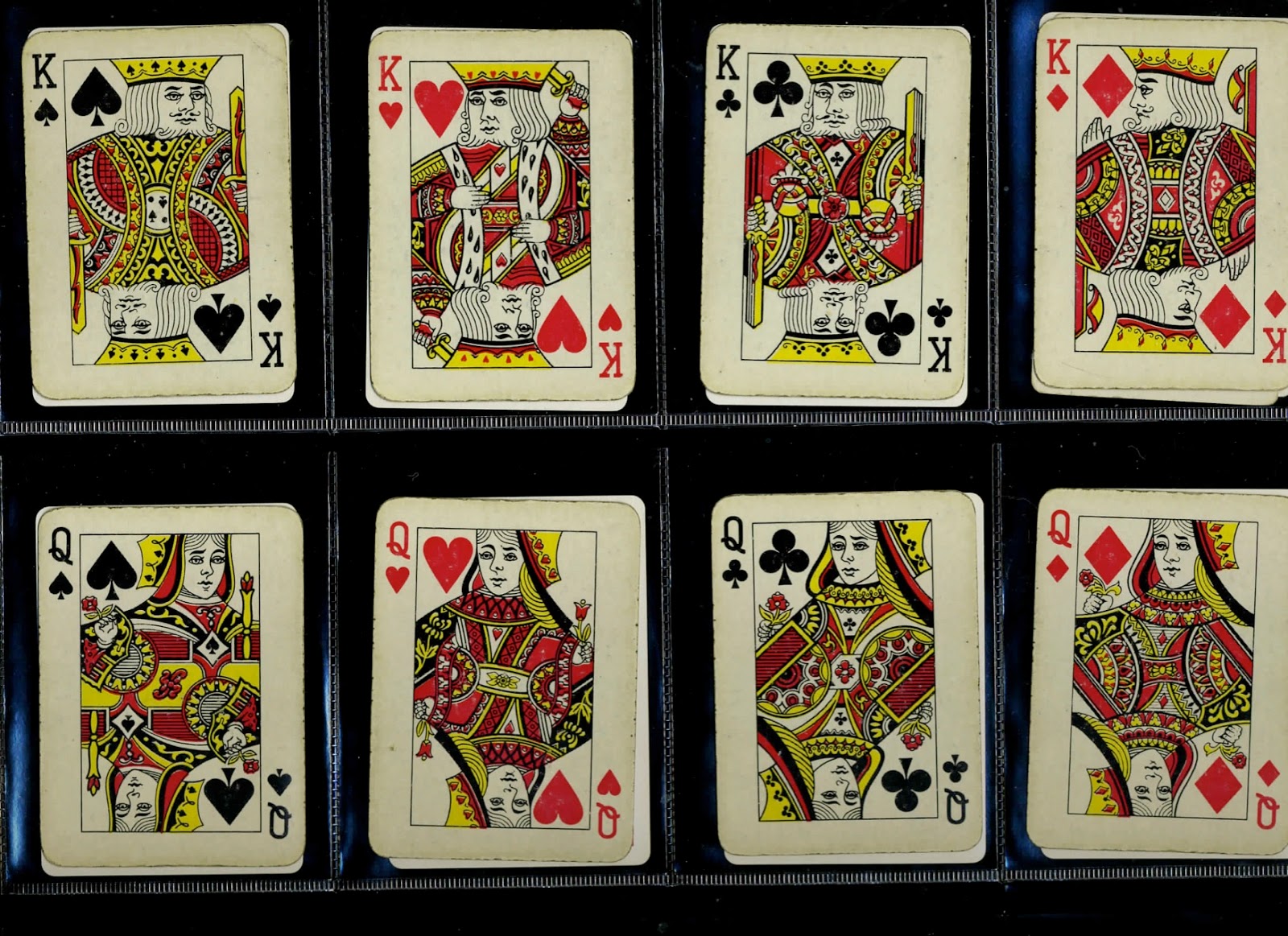
Rodero, c.1975
Whitman's design was imported in some packs and was the model for copies with slightly altered decoration on the clothing. The AS seems to be based on Kem's design.

La Banca, c.1978
Hallmark's elaborate design in its turned version, an unusual model to choose, was used by Joker. Whether these were actually printed by Hallmark is difficult to say; the plates look the same except for two minor changes, that could have been made to the original plates anyway: the KH has no moustache, but the JD does.

Joker, c.1980
Brazil and Chile
The best known Brazilian maker is Copag, now part of the Carta Mundi empire. The courts they have used since the 1950s are based on a USPCC design, US1.1, which are used, amongst other things, in Fauntleroy patience packs. Interestingly, the format of a lot of (non-Argentinian) South American packs is a small-framed court figure with relatively large indices, though, unlike their earlier cards, the present Copag ones are full size.

Copag, 2007
There is an odd version of the English pattern made specially for a Brazilian jeweller, which has a mixed up set of courts with facetted suit signs. These may be by Copag, but they are anonymous. The QC is the traditional QD, JS = JH and JH = JD: compare with the courts above.
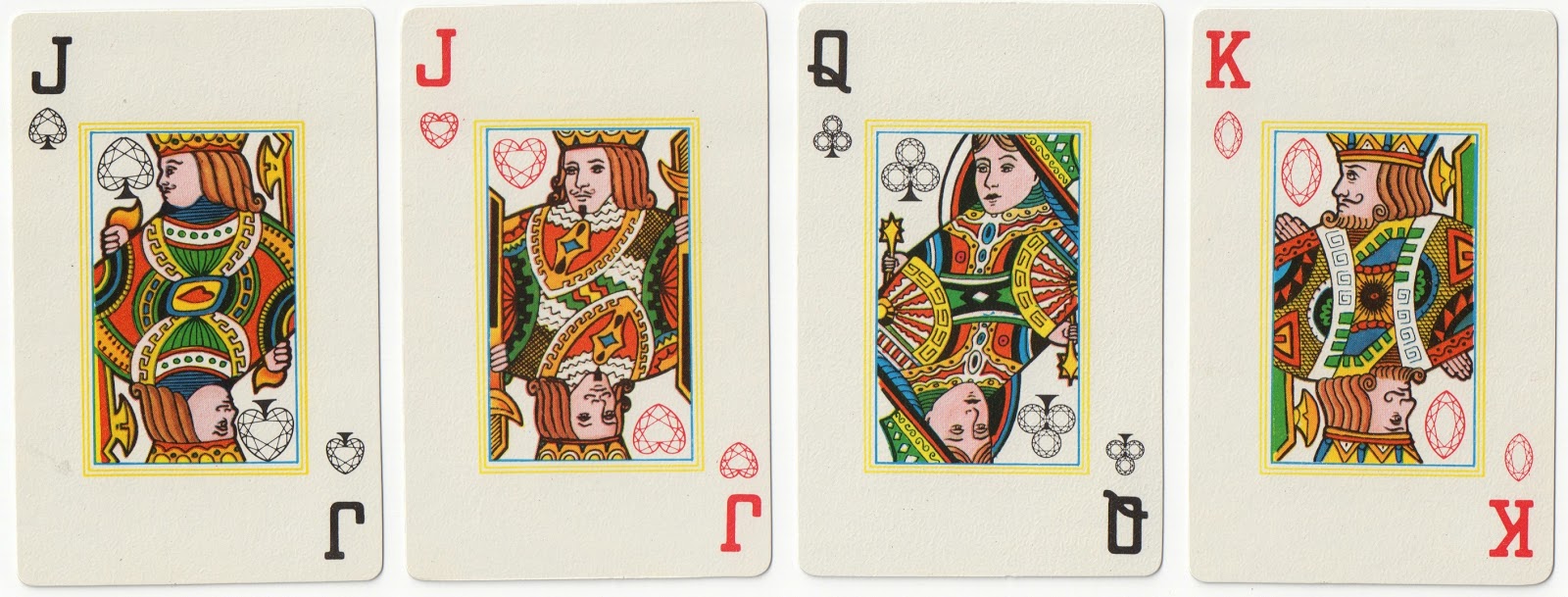
Copag, c.1980
Another pack from the 1950s and later is a patience pack branded Mirim. The courts are an odd mixed-up set based largely on Dougherty's bridge-size courts, for example the QD = QS, the QS = QD.
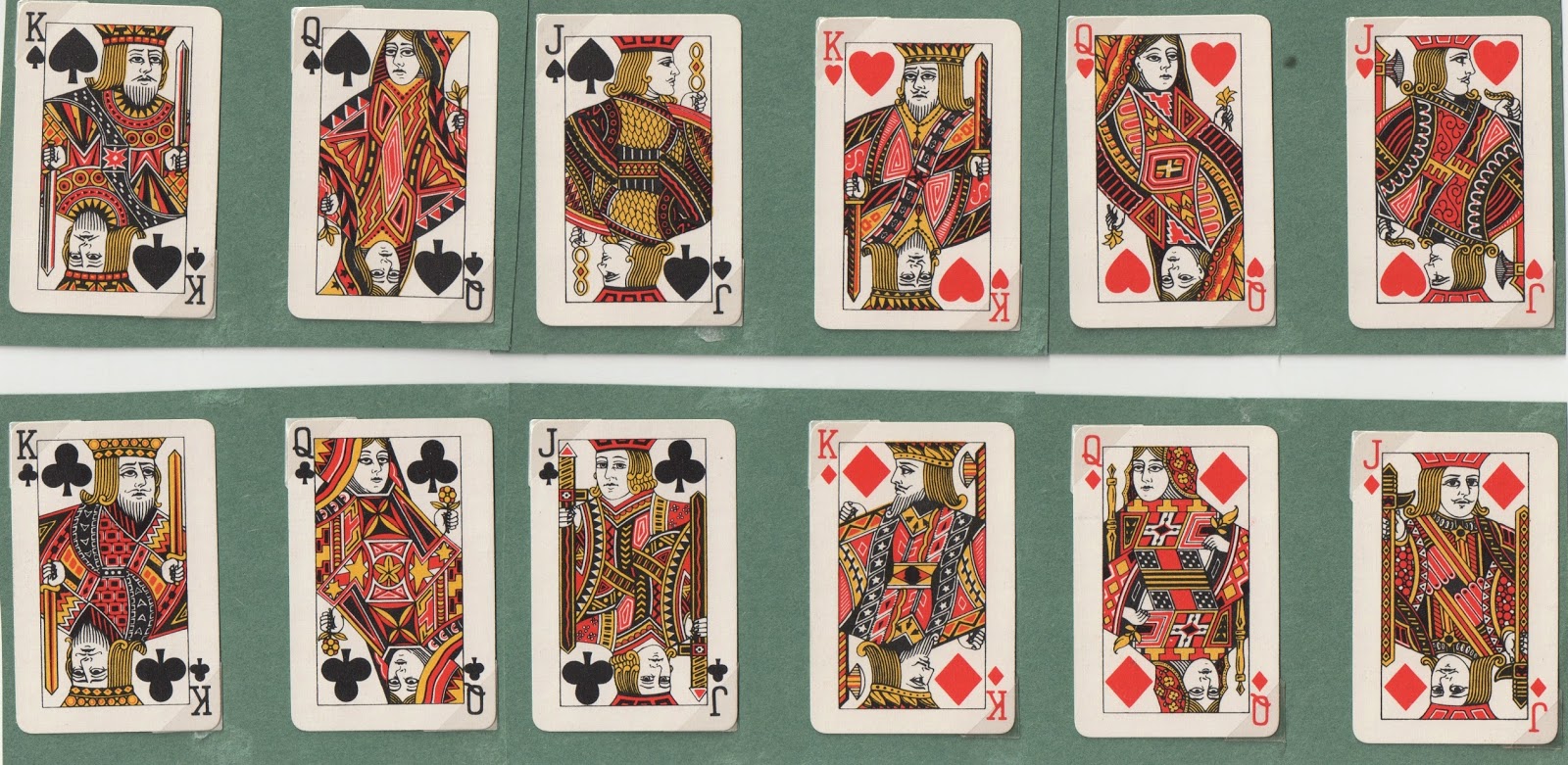
Copag Mirim patience, ?c.1973
Another important Brazilian maker is Soimca. Their English courts are a direct copy of Fournier's and may be printed in China. On the other hand, a similar pack with larger indices, which was definitely made in China, may simply be a copy of the Brazilian version.
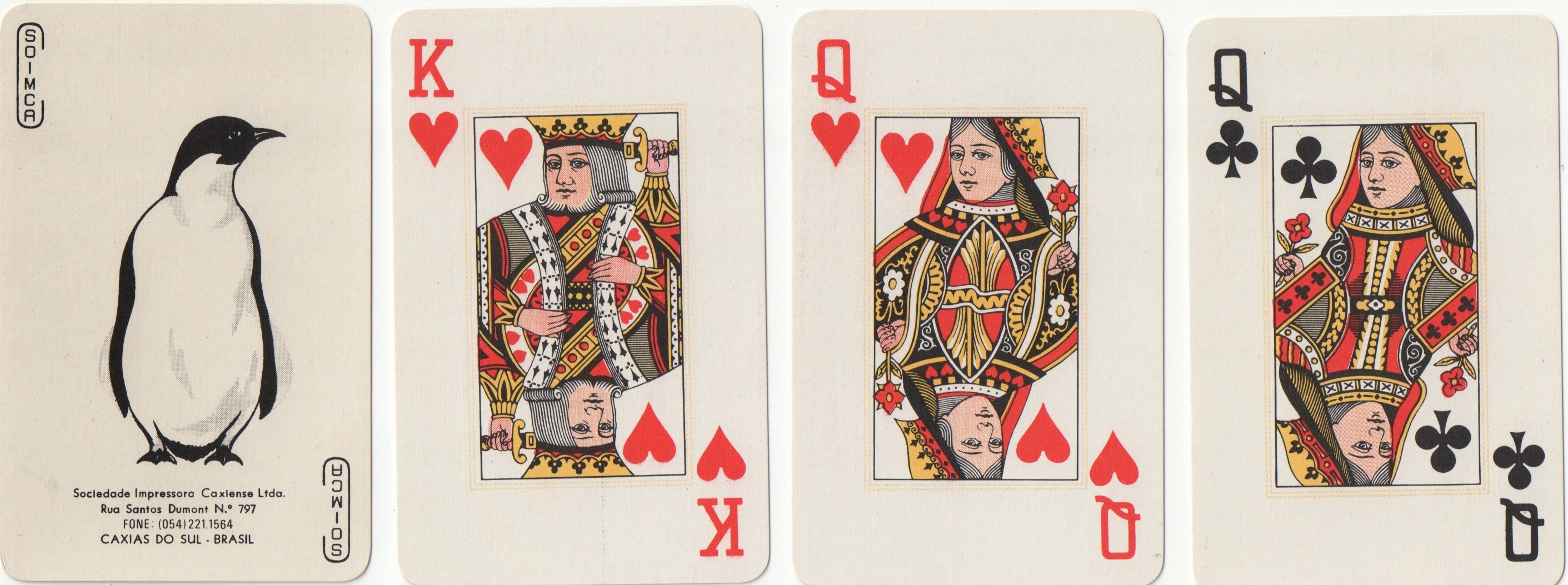
Soimca Pingüim, c.1980
A much smaller outfit about which I know nothing is Lumicart. They have their own version of the courts, again in a typical small format.

Lumicart, c.1985
The only Chilean pack I know of with English courts is a patience pack by Compania Chilena de Tabacos from the 1930s. It, too, uses US1.1 courts, but unlike the Copag version it is an exact copy of the original, so may have been produced by USPCC.

CCT, c.1930
For Mexico, Peru, Uruguay, Venezuela, see the new page 9.

By Ken Lodge
Member since May 14, 2012
I'm Ken Lodge and have been collecting playing cards since I was about eighteen months old (1945). I am also a trained academic, so I can observe and analyze reasonably well. I've applied these analytical techniques over a long period of time to the study of playing cards and have managed to assemble a large amount of information about them, especially those of the standard English pattern. About Ken Lodge →
Related Articles

Catalan pattern by B.P Grimaud
Standard Spanish Catalan pattern deck made in Paris by B.P Grimaud.

Archaic Spanish proof sheets
2 x uncoloured proof sheets of archaic Spanish-suited playing cards produced for “New Spain”, possib...

Peintres Latino Americains
Original artwork by 18 different Latin American artists.

Jeu Quatre Empereurs
Brazilian scenic aces with emperors of Brazil, Austria and France and other dignitaries on the court...

Kings and Queens of Brazil & Portugal
Historical playing cards by C. L. Wüst depicting monarchs of Brazil and Portugal.

EPOC playing cards
Modern designs by Brazilian artist Maria Leonor Décourt inspired by standard English pattern courts....

B.P. Grimaud pack for Bolivia
Spanish-suited pack made in France for sale in Bolivia, c.1880.

South American Costumes
Costumes of people of Brazil, Peru and Mexico, with views of Rio de Janeiro on the aces.

Félix Solesio e Hijos
Félix Solesio e Hijos - Real Fábrica de Madrid - Spanish National pattern for Venezuela

Portuguese cards for Brazil
Portuguese-type cards made in or for Brazil, c.1890.

Goodall’s Wüst house pattern playing cards
Goodall’s Wüst house pattern playing cards with scenic aces of Brazil.

Unnamed Scenic aces of Rio de Janeiro
Cards made by C.L.Wüst of Germany for Brazil

Wüst playing cards with International scenic aces
A rarely seen pack of cards

Parisian Spanish pattern by Fossorier, Amar et Cie
‘Parisian’ Spanish pattern published by Fossorier, Amar et Cie (Paris), c.1902.

Félix Solesio e Hijos
Félix Solesio e Hijos, Fábrica de Macharaviaya, Spanish National pattern for West Indies, 1801.

Naipe de Bridge
Standard English pattern pack made in Ecuador, c.1970.
Trending Articles
Popular articles from the past 28 days


